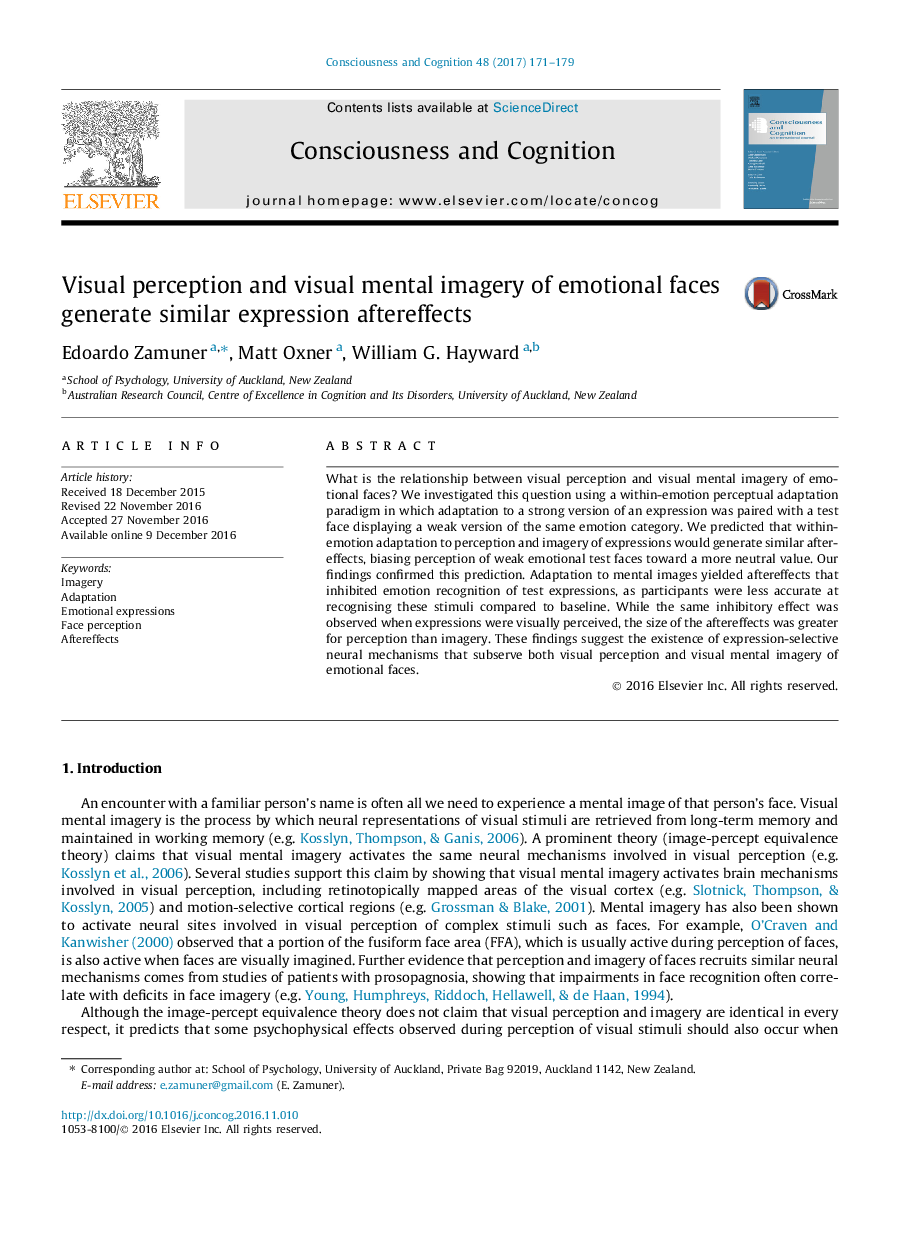| Article ID | Journal | Published Year | Pages | File Type |
|---|---|---|---|---|
| 5041903 | Consciousness and Cognition | 2017 | 9 Pages |
â¢First study to investigate adaptation to visual mental imagery of facial expressions of the six basic emotions.â¢Adaptation to mental images yielded aftereffects that inhibited emotion recognition of test expressions.â¢The size of the aftereffects was greater for perception than imagery.â¢Our findings suggest that both perception and imagery of emotional faces activate expression-selective neurons.
What is the relationship between visual perception and visual mental imagery of emotional faces? We investigated this question using a within-emotion perceptual adaptation paradigm in which adaptation to a strong version of an expression was paired with a test face displaying a weak version of the same emotion category. We predicted that within-emotion adaptation to perception and imagery of expressions would generate similar aftereffects, biasing perception of weak emotional test faces toward a more neutral value. Our findings confirmed this prediction. Adaptation to mental images yielded aftereffects that inhibited emotion recognition of test expressions, as participants were less accurate at recognising these stimuli compared to baseline. While the same inhibitory effect was observed when expressions were visually perceived, the size of the aftereffects was greater for perception than imagery. These findings suggest the existence of expression-selective neural mechanisms that subserve both visual perception and visual mental imagery of emotional faces.
